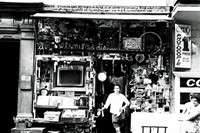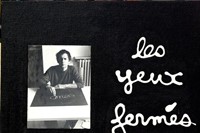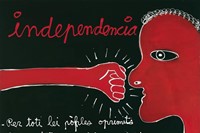Fluxus is the most radical art movement in history, and Ben Vautier one of its greatest living protagonists. This month witnesses a major retrospective of the provocative French artist at the Museum of Contemporary Art in Lyon, and we caught up with
Fluxus is the most radical art movement in history, and Ben Vautier one of its greatest living protagonists. Spearheaded by the truly groundbreaking Lithuanian artist George Maciunas, Fluxus was anti-hierarchy and anti-art on the most extreme level imaginable, seeking not only to blur the distinction between the art event or object and the spectator, but also to utterly eradicate it. In the early Sixties, Vautier would profoundly challenge held notions of what actually constituted a work of art; by sweeping streets, painting the words Coca Cola, spitting into a bucket or simply sleeping in a gallery window, he changed the art world forever.
This month witnesses a major retrospective of the provocative French artist at the Museum of Contemporary Art in Lyon, which has been co-curated by Yoko Ono’s long-time partner in artistic provocation, Jon Hendricks. If you have ever seen any footage of John and Yoko’s bed-in, you have seen Hendricks. He’s the white-haired, bespectacled New Yorker trying to keep the microphone-wielding philistines at bay. We caught up with the Fluxus legend at his home in downtown New York to discuss Vautier’s upcoming show, underground artists that eat buildings and a whole lot more….
Ben has such an enormous body of work, what did you want to achieve in helping him curate this exhibition?
There are certain ideas in Ben’s work that I felt hadn’t really been emphasized before. There’s a very strong conceptual base, which is obscured when you see some of his more flamboyant work. I wanted people to view the writings quite distinctly as a kind of painting that hadn’t ever really been done. Magritte did it a little, and later Ed Ruscha, but it was different. Ben’s are not about wordplay; they are just the thing itself – statements such as ‘Drink Coca Cola’ or ‘Liberty’… The later word painters were more self-conscious. The other area that is very interesting is the jests. I sort of dismissed them at the time, and recently, I started thinking about them as being what was important – just these sort of little everyday actions, such as picking up a pen or pissing on the wall.
So, you wanted to show that the action was the essential element?
The action is beautiful. It was sometimes extremely poetic and sometimes very brutal. For instance, Ben had one piece where he dropped a piano called Fortissimo For Piano. In the book of the exhibition, I have concentrated very much on the action. Ben’s words are there, but it’s not cluttered up; they don’t take away from the images.
And his whole life as an artist kicked off in a record shop?
What was interesting about Ben’s record shop was that he called it Laboratoire 32. That was about collectivism. He got people together and had meetings… it wasn’t just Ben. Fluxus was all about collectivism. George Maciunas really saw the importance of being in a group, and after his death, it became more about individualism. Sure, some of the Fluxus artists did things together, but it was more about them being together as a group of individuals, doing their individual things.
Do you think the establishment viewed Fluxus as dangerous?
Some people, probably. It’s taken years for them to even take it seriously. But I don’t know whether, for the most part, any art is perceived as dangerous. There was a lot in the air at the time though… There were anarchists such as Black Mask in New York, and the Europeans who came here after the war had a sensitivity that Americans weren’t quite sure what to make of, but which they certainly benefitted from. Of course, you have the whole Black Mountain College scene, and John Cage, which all was very significant. The Situationists in France were also doing similar things…
Why do you think the radicalism of Fluxus is missing from contemporary art?
Part of the problem is that we only see what we want to see or we see what is fed to us, or what these hedge-funders behind some of it let us see. I don’t think it’s not going on – and maybe later we will see it. You have to remember that a lot of these artists were imperceptible when they were doing it. Yoko, for example, was doing shows in little obscure galleries in Tokyo or New York, where maybe fifty people could get in at most. There are still artists who want to be outside of the system though, such as Emily Katrencik. She described to me how she decided to consume a building. She literally took a chunk of this building and started eating it. She doesn’t rent a place; she has these strategies for living and finds places to live within existing structures, cracking a space or whatever. She gets her food out of dumpsters… That is an incredible art statement.
Do you think there are individuals working underground with similar conceptual ideas that are riffing on a collective unconscious?
There could be others who are working in a similar way, sometimes consciously, sometimes not, sometimes just out of necessity. I don’t think the scale of something has much to do with anything. John and Yoko’s bed-in was an enormous event – on the television, in the papers, and so on. I’m not saying Emily’s thing is on the same scale, but it is important. It probably it won’t touch millions of people, but what she’s doing shows this counter-balance of the gluttony in America – the squandering of resources for war and comfort. It’s big in its own way.
I suppose if the art exists purely in this transitory moment, it takes away the notion that the end product can be a commodity.
One would hope so, but it doesn’t usually work that way. And if it does succeed then generally, we don’t even hear about it. For the most part, once you start hearing about something, there’s some form of commoditization. But Ben has used commodity in the Fluxus sense. He makes all sorts of craft – socks, hats and gloves, and so on. It’s great that you can get a pair of socks with his words on for just a couple of Euros more than a regular pair.
John-Paul Pryor is Arts & Culture Editor at Dazed Digital and writes for Dazed & Confused, TANK, Another and The Quietus. His debut novel Spectacles will be published in 2010 by Seabrook Press


